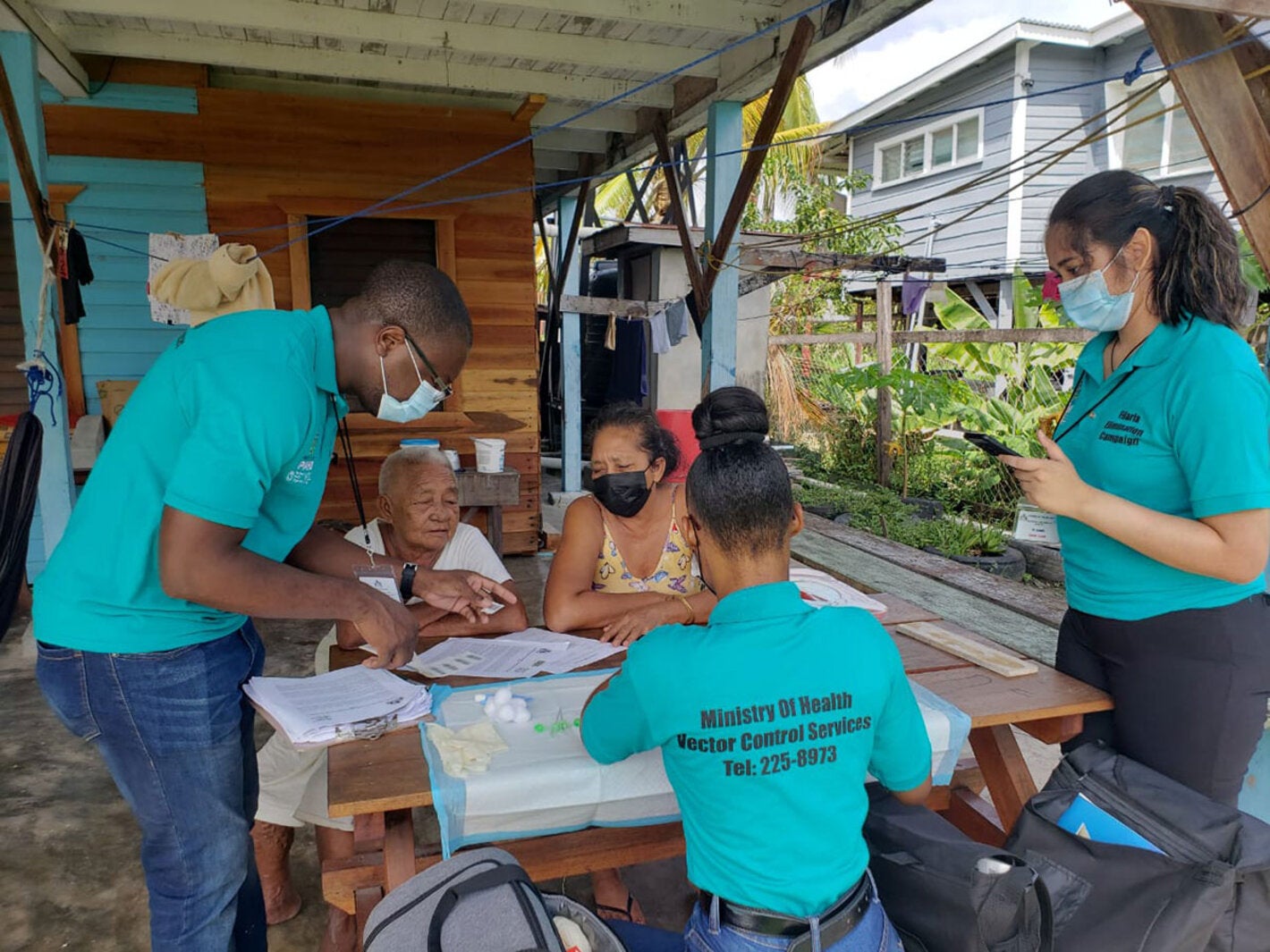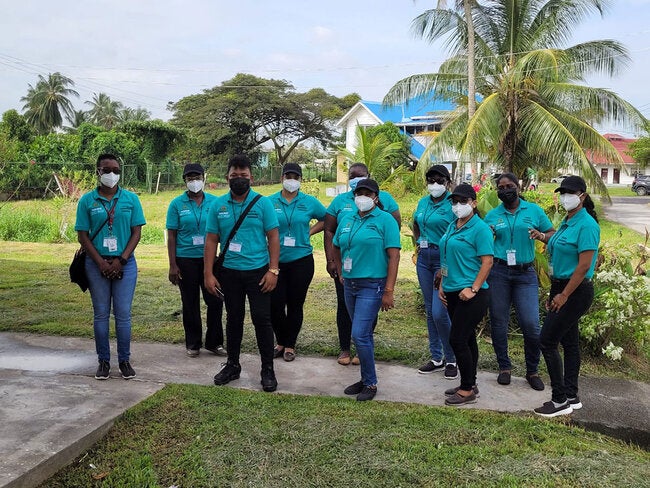
Washington, D.C. October 27th, 2021 (PAHO) Guyana is one of the four countries in Latin America and the Caribbean (LAC) where Lymphatic Filariasis (LF) is still endemic and a major public health problem. Although the government of Guyana has made major efforts to eliminate LF as a public health problem in the past, the last 4 years have been decisive.
In 2017 and 2018 after the introduction of new approaches and tools, including microplanning, communication strategies, and supervision tools, for the first time and following PAHO/WHO recommendations, Guyana exceeded the minimum threshold of 65% coverage in mass drug administration (MDA) necessary to fullfill one elimination criteria in 4 of 10 regions of the country, using Diethylcarbamazine (DEC) and Albendazole (ALB). In 2017 and 2018, Guyana treated more than 413,000 people, more than 79% of the eligible population by year.
In 2019, Guyana decided to scale up treatment to achieve 100% treatment of the geographical regions where LF is endemic. The country also decided to introduce Ivermectin (IVM), starting triple-drug therapy (IDA) for this disease for the first time in LAC, and becoming the 11th country in the world to use IDA. In 2019 and 2021, Guyana performed the MDA with IDA successfully in 8 (100% geographical coverage for population at risk) of 10 regions. More than 508,000 (75.7%) people were treated in 2019 and 486,000 (72%) were treated in 2021, exceeding again the minimum coverage of 65% of the at-risk population.
Progress despite the COVID-19 pandemic
In the last 2 years, the COVID-19 pandemic has caused serious health, social and economic damage in the LAC region, but the government of Guyana, using the safety guidelines provided by PAHO/WHO to carry out activities in communities, was able to safely and successfully carry out field activities. In 2021, the MDA again achieved 100% geographical coverage through a mixed pill distribution strategy at schools, fixed points, and house to house. To implement these strategies, the country mobilized around 1,500 pill distributors, all of them using personal protective equipment (PPE) to be able to distribute the pills while protecting the health and well-being of both the communities served and the health care workers.
In November 2021, after the second successful MDA with IDA, the country started the pre-transmission assessment surveys (pre-TAS) to verify if the country could interrupt the MDA and start the post-treatment surveillance aimed at elimination. The surveys will be implemented in 13 evaluation units (EU), with an estimated sample size of 600 adults 20 years or older per EU. The country has mobilized around 40 health professionals, using adequate PPE, to work in this survey which is scheduled to end in early December.
The Pan-American Health Organization acknowledges and congratulates the government of Guyana and the staff of its LF Elimination Program for its exemplary efforts and significant progress towards the elimination of lymphatic filarasis as a public health problem.




